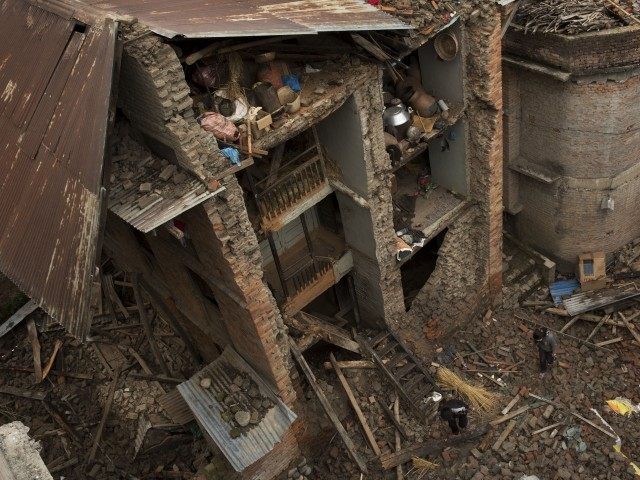Survivors of the earthquake in Nepal clashed with the police while protesting over frustration with the relief operation. There is hardly any food or water as the country continues to suffer through the aftershocks.
More than 5,500 people died in the 7.8-magnitude earthquake. Assistance from the world is flowing in, but the survivors demand more from their own government.
“It is risky here in Kathmandu,” explained Dependra Sharma, 26. “You can see the dead bodies, stinking. There is no water for the people. There is no electricity. There is nothing at all. The people, they may die of hunger. Nothing has come to the common people.”
Sandesh Sharma, 17, feels the same way and claims Nepal “is doing nothing” and “just speaking the words.” Others expressed disgust over the government officials.
“This is one of the most affected parts of Kathmandu, but we are not seeing the help we expected yet,” exclaimed Rajesh Bhandbari, 32. “Our ministers are safe in their residences. There is no sign of them. We have got so much donation from outside countries. They help us. But we have not got one rupee from the Nepalese government.”
Many people are desperate to leave Kathmandu. However, a riot broke out at the main station when buses the government promised did not show up to take people “to far-flung rural areas.” In anger, the rioters jumped onto a truck with water and threw the bottles to people below.
“We’ve been left starving in the cold and the best this government can give us is this queue,” insisted a woman only known as Rajana. “Why are they so slow? I keep hearing on the news that all governments and aid agencies are here, but where are they? Our government is totally absent. Forget shelter, they couldn’t even give us water.”
Those outside of Kathmandu feel like they will never receive help due to their location. Swarathok is 43 miles from Kathmandu. The majority of the homes no longer exist, and those that still stand are too unstable. People can only reach the village by driving two hours “on roads still threatened by landslides and strewn with debris, followed by an hour’s walk along a stony path.”
“No one has come,” cried Rashmita Shashtra, 23. “I walked to the police post and told them we were here. They said there was no plan and they had no orders and told us to stay where we are and wait. So we are waiting.”

COMMENTS
Please let us know if you're having issues with commenting.